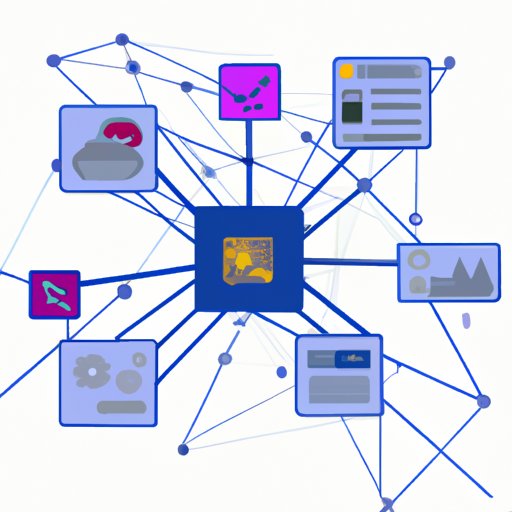Introduction
Web technology is an umbrella term that refers to the use of the Internet and World Wide Web as a means to access and exchange information. It encompasses all aspects of creating, publishing, and managing websites, from coding and scripting to content management and media streaming. In short, it is the foundation for creating digital products and services.
Understanding the Basics of Web Technology
To understand what web technology is, it is important to understand how it works. Web technology is made up of several different technologies, including HTML, CSS, JavaScript, databases, and server-side programming languages such as PHP and ASP.NET. These technologies are used to create websites, applications, and other digital products.
Essential components of web technology include browsers, which allow users to view websites and applications; servers, which store and deliver webpages and applications; and networks, which connect all the pieces together. All these components work together to provide users with an interactive experience.
The benefits of using web technology are numerous. It allows businesses to reach a wider audience and increase their visibility online. It also enables them to provide customers with a better user experience, as well as greater flexibility in terms of design and functionality.
Exploring the Benefits of Web Technology
One of the key advantages of web technology is increased efficiency. By streamlining processes, businesses can save time and money. This is especially true when it comes to managing large amounts of data, as web technology makes it easier to store, organize, and analyze information. Additionally, web technology can help reduce errors and mistakes, since it automates many of the processes involved in data entry and analysis.
Another benefit of web technology is improved security. With the right security measures in place, businesses can ensure that their data is safe and secure. This is particularly important when it comes to handling sensitive customer information, as web technology can help protect against hackers and other malicious actors.
Finally, web technology can lead to cost savings. By streamlining processes and reducing errors, businesses can save money on labor costs. Additionally, web technology can help businesses save money on hardware and software, since many of the tools needed to develop websites and applications are available for free or at low cost.

The Future of Web Technology
As web technology continues to evolve, there are many exciting possibilities for the future. Artificial intelligence (AI) and machine learning will become increasingly important, allowing businesses to automate more tasks and make faster decisions. Automation and robotics will also continue to play a major role, helping to streamline processes and reduce costs.
Cloud computing is another trend that is likely to gain traction in the coming years. Cloud computing allows businesses to store and manage data in the cloud, eliminating the need for expensive hardware and software. This can help businesses save money, as well as reduce their environmental footprint.

A Guide to Choosing the Right Web Technology
When selecting web technology, it’s important to identify your needs first. Ask yourself what you’re trying to accomplish and what type of website or application you need. Once you have a clear idea of what you want to achieve, you can start evaluating vendor options.
When assessing vendors, look for one that offers the features and functionality you need. Additionally, make sure they have a good reputation and a track record of success. Finally, evaluate the costs associated with the vendor and make sure they fit within your budget.

Web Technology Trends and Predictions
Moving forward, mobility will remain a key trend. As more people use mobile devices to access the Internet, businesses will need to ensure their websites and applications are optimized for mobile devices. Augmented reality and virtual reality will also become more popular, allowing businesses to create more immersive experiences for their customers.
Finally, blockchain technology is likely to play a major role in the future of web technology. Blockchain has the potential to revolutionize the way we handle data and transactions, making it faster, more secure, and more transparent.
Conclusion
In conclusion, web technology is an umbrella term that refers to the use of the Internet and World Wide Web as a means to access and exchange information. It encompasses all aspects of creating, publishing, and managing websites, from coding and scripting to content management and media streaming. The benefits of using web technology include increased efficiency, improved security, and cost savings. Looking ahead, AI, automation, robotics, cloud computing, mobility, augmented reality, and blockchain are all likely to play a major role in the future of web technology.
When choosing web technology, it’s important to identify your needs, assess vendor options, and evaluate costs. By following this guide, businesses can ensure they select the best web technology for their needs. With the right web technology, businesses can take advantage of the many benefits it has to offer.
(Note: Is this article not meeting your expectations? Do you have knowledge or insights to share? Unlock new opportunities and expand your reach by joining our authors team. Click Registration to join us and share your expertise with our readers.)
